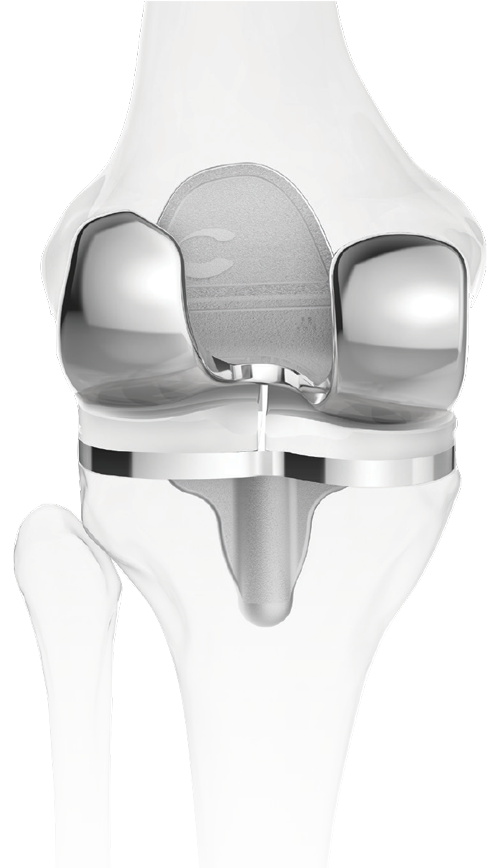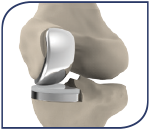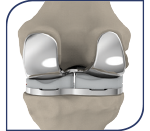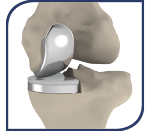Conformis
Customized Knee Implants
Understanding Your Knee
To understand the benefits of the Conformis personalized approach, it’s important to understand the anatomy of your knee. Your knee joint is formed by the intersection of the femur (thigh bone), the tibia (shin bone) and patella (knee cap). These bones form three “compartments” or sections.
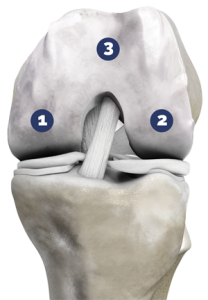
1Medial compartment
(inner half of your knee)
2Lateral compartment
(outer half of your knee)
3Patellofemoral compartment
(behind the knee cap)
Osteoarthritis (OA) is a degenerative joint disease characterized by the breakdown and wearing away of cartilage causing the bones to rub together and result in pain. It can affect all of the knee or just parts, depending on the severity. A partial knee replacement (PKR) is an option for people who have OA in one or two compartments. A total knee replacement (TKR) is an option for people with OA in all three compartments.
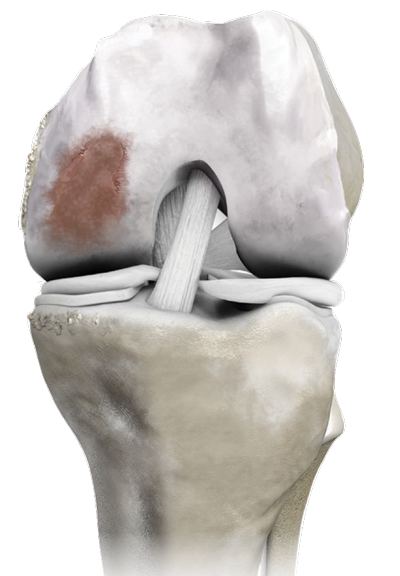
Unicompartmental OA
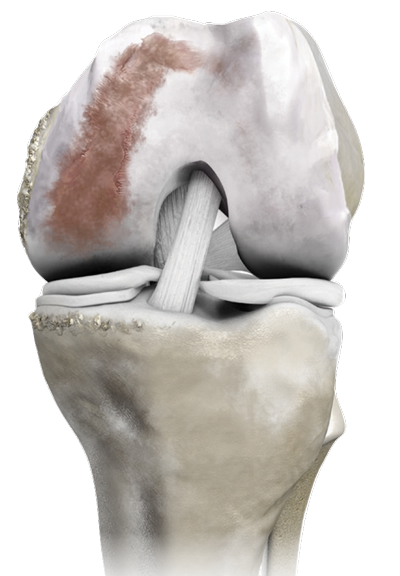
Bicompartmental OA
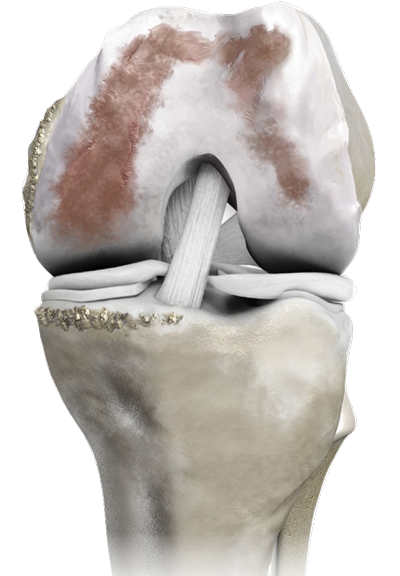
Tricompartmental OA
We’re Available!
Request an appointment using our online appointment request form
There has to be a better way
Knee replacement is a very common procedure. Despite its proven history, studies show that as many as 1 in 5 patients report they are not satisfied with the results of their total knee replacement.
Knees vary in size and shape. Even your own two knees are different. In a traditional knee replacement, however, the surgeon selects an “off-the-shelf” implant from 6-10 standard sizes and makes the necessary adjustments to fit the implant during the procedure.
Because off-the-shelf implants aren’t designed to your specific anatomy, surgeons often have to compromise on implant fit, rotation, and alignment. These compromises can cause pain or discomfort after surgery and help explain why 1 in 5 patients aren’t satisfied.
The first knee replacement that fits only one knee. Yours.
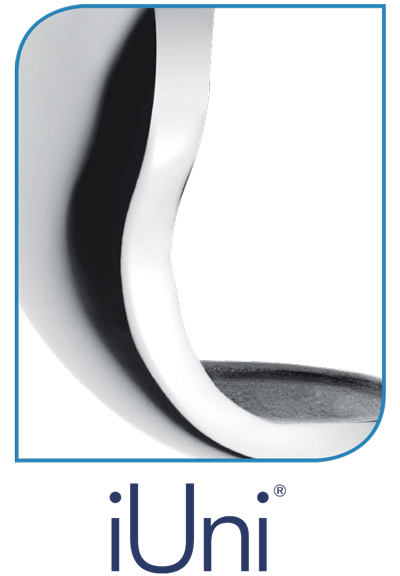
Unicompartmental
Knee Replacement
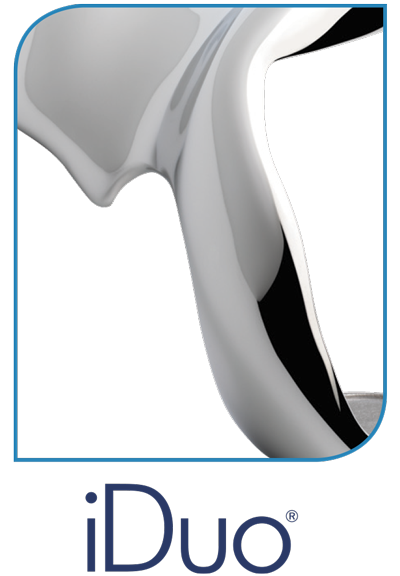
Bicompartmental
Knee Replacement
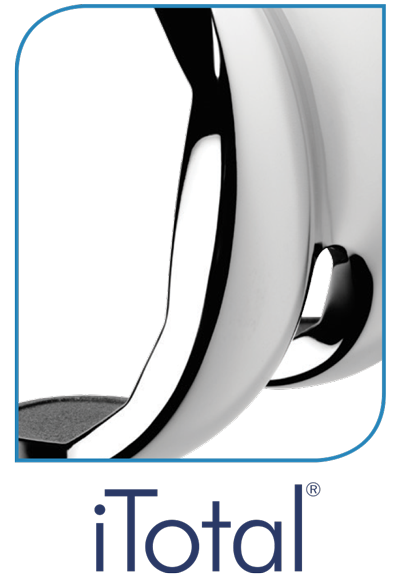
Tricompartmental
Knee Replacement
Making it personal instead of off-the-shelf
To provide our patients with better results, Conformis has developed the only customized total knee replacement that is designed specifically for your knee.
This patient-specific approach offers unique advantages not possible with traditional, off-the-shelf implants:
- Individualized fit that virtually eliminates sizing compromises common with off-the shelf implants and often associated with pain after surgery
- Designed to follow the shape and contour of each patient’s knee, which provides an increased potential for a more natural feeling knee
- Maintains the patient’s natural joint lines to avoid instability, a common cause of of patient dissatisfaction
Customized Fit
Better fit leads to less pain
Conformis implants are specifically designed to fit your knee, avoiding sizing and
positioning compromises common with off-the-shelf implants that can lead to long-term painful outcomes. Our implants are also designed for optimal bone preservation.
Patient A

Patient B
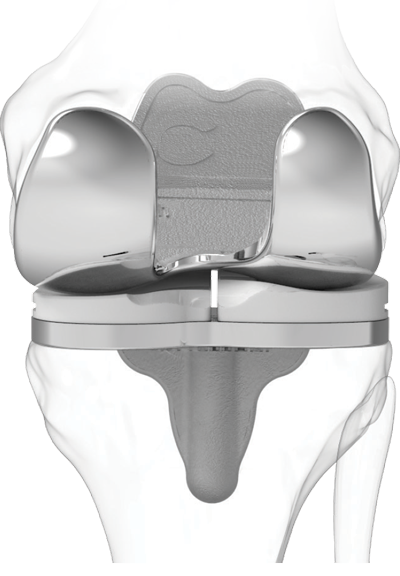
Patient C

Customized Shape
Designed for a more natural feeling knee
Conformis implants are designed to mimic the natural shape of your knee, which plays an important role in the way your knee bends and extends. By restoring the natural shape of your knee rather than replacing it with the standardized geometry of off-the-shelf implants, your knee may feel more like your natural knee.

Each knee has its own shape and curvature

Each implant is customized based on your set of curves
Maintaining Joint Lines
Stability more closely matched to the normal knee
Many patients complain that their knee feels wobbly after knee replacement surgery. This feeling is formally known as mid-flexion instability. Off-the-shelf knee implants aren’t designed to match the natural offset joint line that most patients have. Instead, they flatten the offset to the same height, which can lead to mid-flexion instability.
Conformis implants maintain the patient’s medial and lateral joint lines, which allows for a more stable knee after surgery.
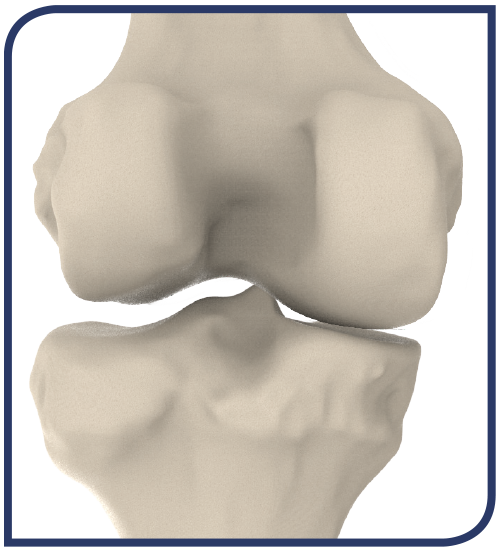
Patient’s natural medial and lateral joint lines
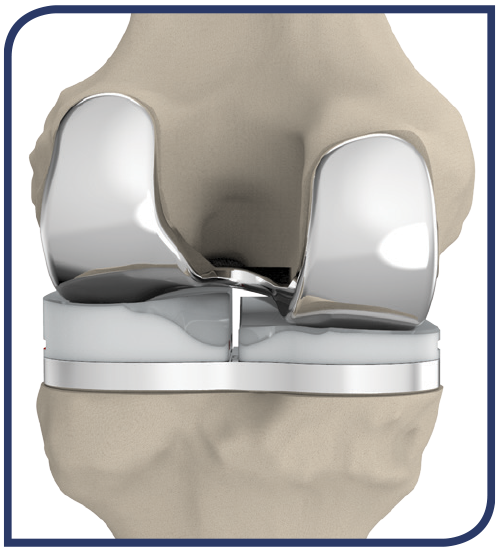
iTotal matches the patient’s shape, respecting the joint lines
Customized Design
Customized just for you
Conformis iFit® image-to-implant® technology converts a CT scan of your knee into a 3D model and then designs an implant that’s unique to you. This fully automated process ensures that your implant is made for your knee, and only your knee.
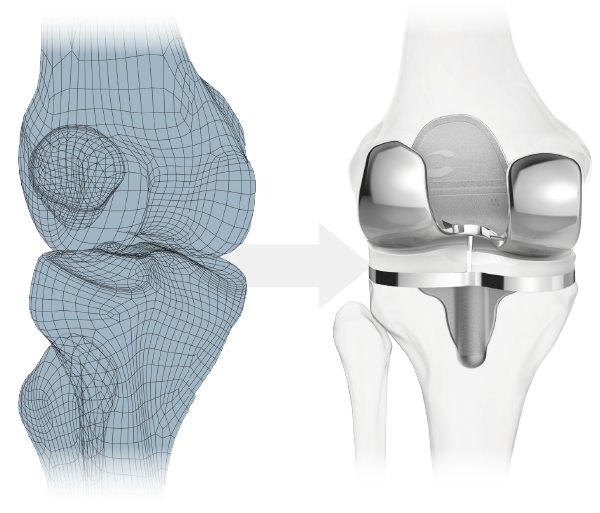
SCHEDULING A CT SCAN

Your doctor will give you a prescription for a diagnostic CT scan of your hip, knee, and ankle
GETTING YOUR KNEE SCANNED

The CT scan will be sent to Conformis
RECREATING YOUR KNEE
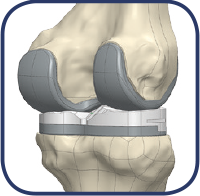
Using your CT scan, a 3-D model of your knee is developed and will be used to individualize your implant
PERSONALIZING YOUR IMPLANT
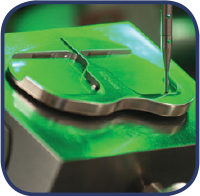
Your implant and surgical instrumentation are designed and manufactured specifically for you
PREPARING FOR SURGERY

Your implant will be delivered to the hospital a few days before surgery
See what Conformis patients are saying…
We're Available!
Southlake, TX Location
DR BEN ORTHO
1545 E Southlake Blvd
Suite 140
Southlake, TX 76092
Fort Worth, TX Location
DR BEN ORTHO
909 9th Ave
Ste 401
Fort Worth, TX, 76104

